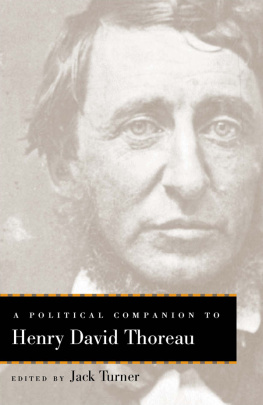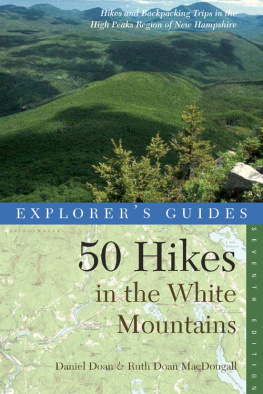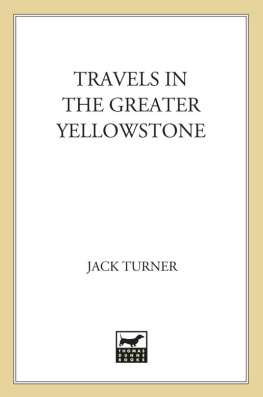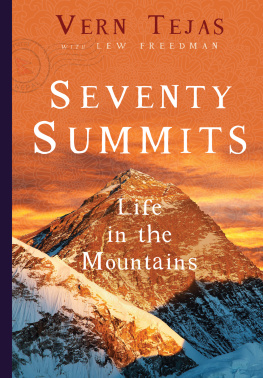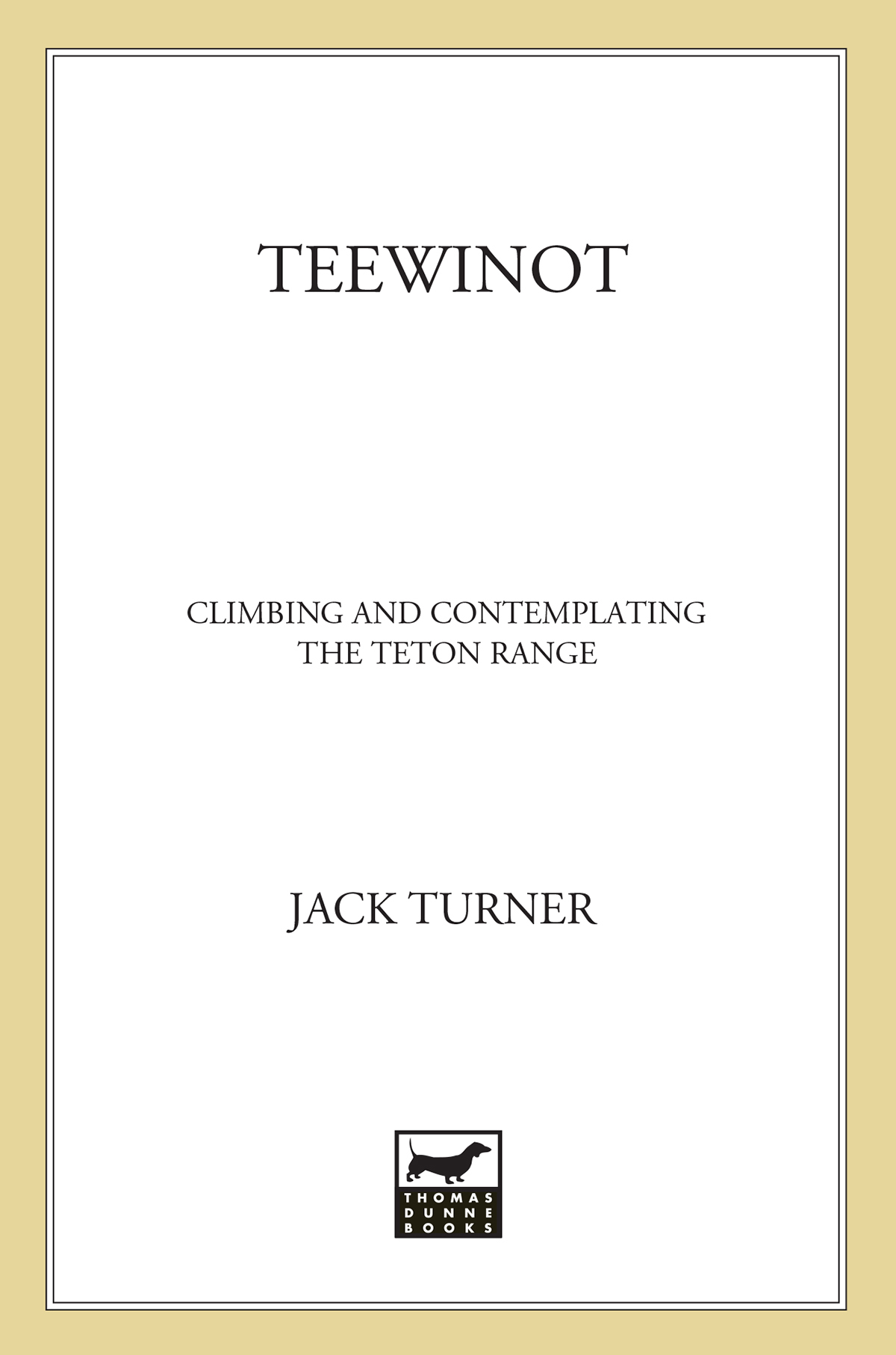I thank the following people for assistance in producing this book: A1 Read, Rod Newcomb, Kim Schmitz, Tom Kimbrough, Mark Newcomb, Steve Koch, Dick Dorworth, Jim Kanzler, Susan Stone, Nelson Foster, Casey Walker, Renny Jackson, Linda Olsen, Rich Perch, Mark Magnuson, Jim Woodmency, Jeff Foott, Tom Mangelsen, and Weston Walker.
Hannah Hinchman encouraged me to use watercolors to illustrate my journals. The improvement was immediate, and I remain forever grateful.
Emily Stevens allowed me to live at her remote ranch on the Mexican border for several winters. I wrote most of the book in the old bunkhouse, aided by silence and solitude.
Renee Askins and Tom Rush provided me with a writing studio during a time of great need.
Susan Read read the final manuscript and saved me from numerous errors.
Mattie Sheafor, Chuck Schaap, Keith Briggs, Mike Keating,and the staff of Teton Mountaineering provided many years of advice and assistance.
The Teton County Library, the Jackson Hole Historical Society, and the Grand Teton Natural History Association offered various forms of assistance and information.
Dan Burgette, my companion on many of the trips described in the book, deserves a special note of gratitude. I have pirated his ideas and drawn upon his vast knowledge of both the park and its natural history.
Three bows to Bob Dattila, Jim Harrison, and Bob Schuster. Without their affection and support, this book would not have been written.
There exists no canonical human history or natural history of the Teton Range. What information does exist is often in books that are out of print, obscure, rare, privately published, only partially devoted to the area, or that describe something that occurs here without describing local information of its life and ecology, the information that would benefit us most. Almost nothing is known about our insectsthe most numerous fauna and the most important part of the food chain. Leigh Ortenburger wrote a history of the exploration of the region, but unfortunately, it remains unpublished. This bibliography is personal and by no means exhaustive.
GEOLOGY
The complex geology of the Teton Range has been understood only recently. The following sources are intended for the nonspecialists; more technical in formation is listed in their bibliographies. Creation of the Teton Landscape: The Geologic Story of Grand Teton National Park, by J. D. Love and John C. Reed (Moose, WY: Grand Teton Natural History Association, 1984) is the classic account of the geology of the Teton Range. It is, however, a bit dated and should be supplemented with recent material relating to discoveries about roles of volcanic activity and plate tectonics. For this, the best source is Interpretingthe Landscape: Recent and Ongoing Geology of Grand Teton & Yellowstone National Parks, by John M. Good and Kenneth L. Pierce (Moose, WY: Grand Teton Natural History Association, 1996). The Ice-Age History of National Parks in the Rocky Mountains by Scott A. Elias (Washington, DC: Smithsonian Institution Press, 1996) integrates the most recent geological information with ecology and human history.
Useful maps include Map 1-730 in Geologic Block Diagram and Tectonic History of the Teton Region, Wyoming-Idaho, Miscellaneous Geologic Investigations, by J. D. Love, John C. Reed, Jr., Robert L. Christiansen, and John R. Stacy (Washington, DC: Department of the Interior, United States Geological Survey, 1973); and the stunningly beautiful Geologic Map of Grand Teton National Park, Teton County, Wyoming, Miscellaneous Investigations Series Map I 2031 by J. D. Love, John C. Reed, Jr., and Ann Coe Christiansen (Washington, DC: Department of the Interior, United States Geological Survey, 1992).
ECOLOGY
Because the altitude varies so much in Grand Teton National Park, there are many different ecosystems. The main ones are covered by the magisterial Mountains and Plains: The Ecology of Wyoming Landscapes by Dennis H. Knight (New Haven: Yale University Press, 1994). An excellent introduction to the ecology of Jackson Hole is The Natural World of Jackson Hole: An Ecological Primer by Tim W. Clark (Moose, WY: Grand Teton Natural History Association, 1999).
There exists no alpine ecology of the Teton Range, but information of interest to the mountaineer can be found in Timberline: Mountain and Arctic Frontiers by Stephen F. Arno and Ramona P. Hammerly (Seattle: Mountaineers Press, 1984) and Land Above the Trees: A Guide to American Alpine Tundra by Ann H. Zwinger and Beatrice E. Willard (New York: Harper & Row, 1972).
Most of what I know about winter ecology comes from Winter: An Ecological Handbook by James C. Halfpenny and Roy Douglas Ozanne (Boulder: Johnson Books, 1989). On the ecology of air, see David Lukas, Of Aerial Plankton and the Aeolian Zone, Orion 18, no. 2 (Spring 1999).
Although it is a phenology, not a descriptive ecology, I strongly recommend For Everything There Is a Season: The Sequence of Natural Events in the Grand TetonYellowstone Area by Frank C. Craighead, Jr. (Helena, MT: FalconPress, 1994). 1 consult Craigheads masterpiece more than any other book in my Teton library. Treasure it. There is no one else who could write such a book.
CLIMBING, SKIING, AND HIKING
Mountaineering literature on the Tetons is dominated by A Climbers Guide to the Teton Range, 3rd ed., by Leigh N. Ortenburger and Reynold G. Jackson (Seattle: Mountaineers, 1996), which serves not only as a detailed guide to climbing routes in the range but as an introduction to geology, weather, approaches, and history.
Ski mountaineering in the rangeroutes, equipment, historyis thoroughly covered by Teton Skiing: A History and Guide to the Teton Range by Thomas Turiano (Moose, WY: Homestead Publishing, 1995).
Those interested in the first ascent of the Grand Teton should look at The Grand Controversy: Pioneer Climbing in the Teton Range and the Controversial First Ascent of the Grand Teton by Orrin H. Bonney and Lorraine G. Bonney (New York: American Alpine Club, 1993). A concise history of early climbing in the range is Mountaineering in the Tetons, 1898-1940 by Fritiof Fryxell and Phil D. Smith (Jackson, WY: Teton Bookshop, 1978).
Biographies of Exum guides mentioned in this book include On Belay! The Life of Legendary Mountaineer Paul Petzoldt by K. Carleson Ringholz (Seattle: Mountaineers Press, 1988); Glenn Exum: Never a Bad Word or a Twisted Rope by Charlie Craighead (Moose, WY: Grand Teton Natural History Association, 1998); Ascent: The Spiritual and Physical Quest of Legendary Mountaineer Willi Unsoeld by Lawrence Leamer (New York: William Morrow, 1999); and Gary Hemming by Mirella Tenderini (Ernest Press, 1995). See also Jeremy Bernsteins essay in The New Yorker, On Vous Cherche, in Mountain Passages (Lincoln: University of Nebraska Press, 1978), pp. 87-109. We Aspired: The Last Innocent Americans by Peter Sinclair (Logan: Utah State University Press, 1993) provides an insightful account of climbing in the Tetons during the 1960s and 1970s.
There are numerous guides to hiking in the Tetons. The classic is Teton Trails: A Guide to the Trails of Grand Teton National Park by Katy Duffy and Darwin Wile (Moose, WY: Grand Teton Natural History Association, 1995). A guide with broader coverage is Jackson Hole Hikes: Grand Teton Park, Targhee, & Teton Forests by Rebecca Woods (Jackson, WY: White Willow Pub lishing, 1996).


